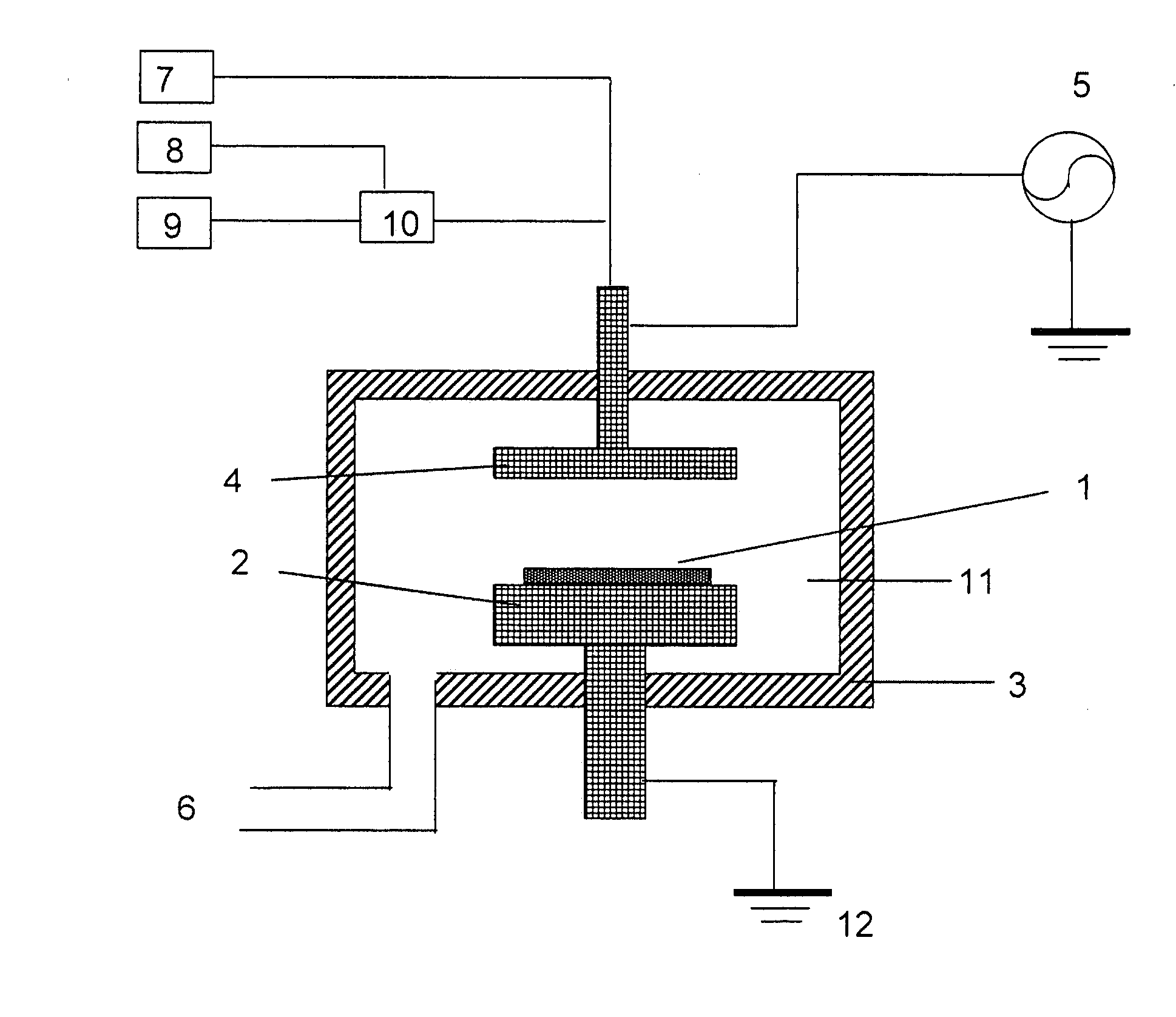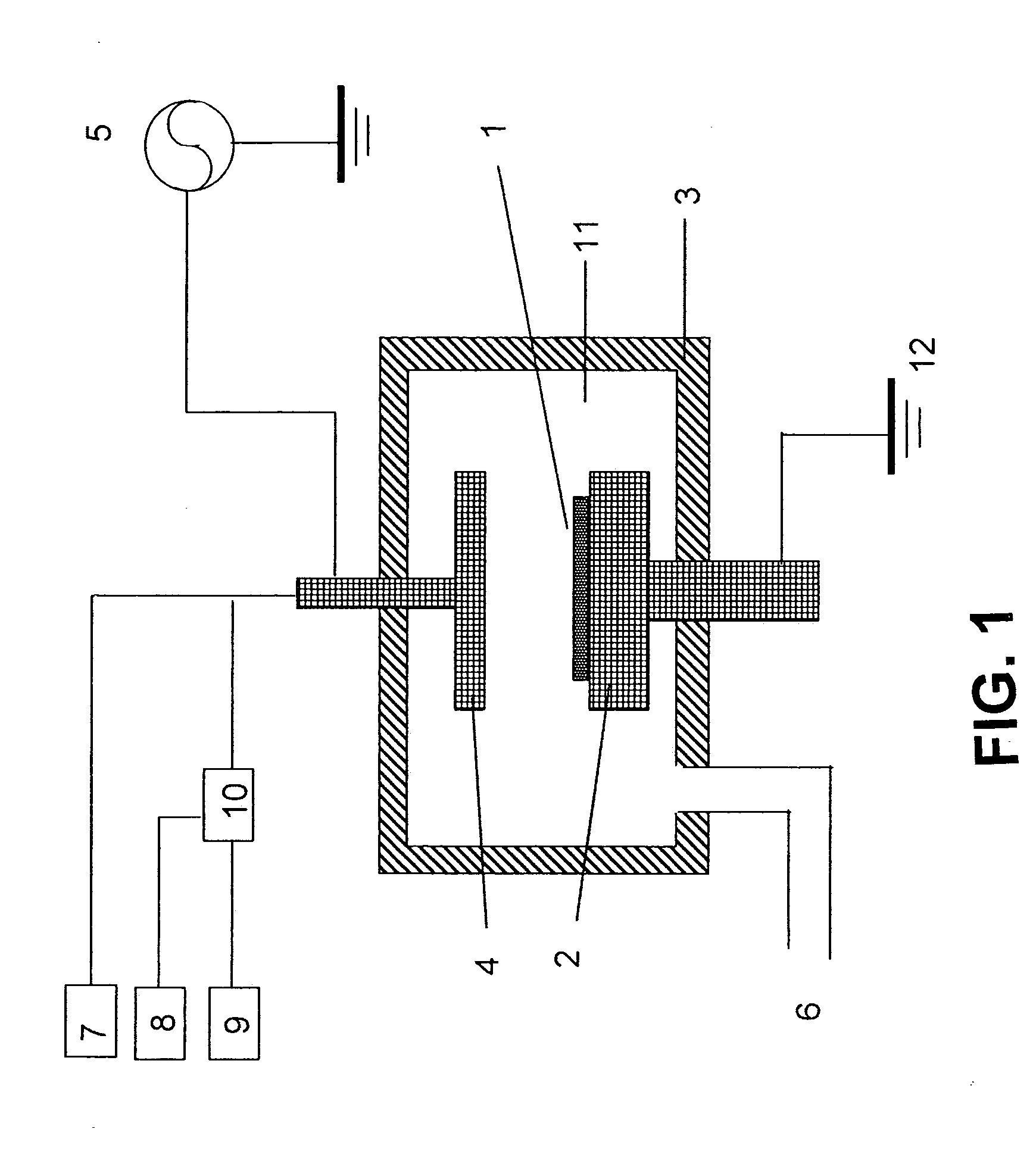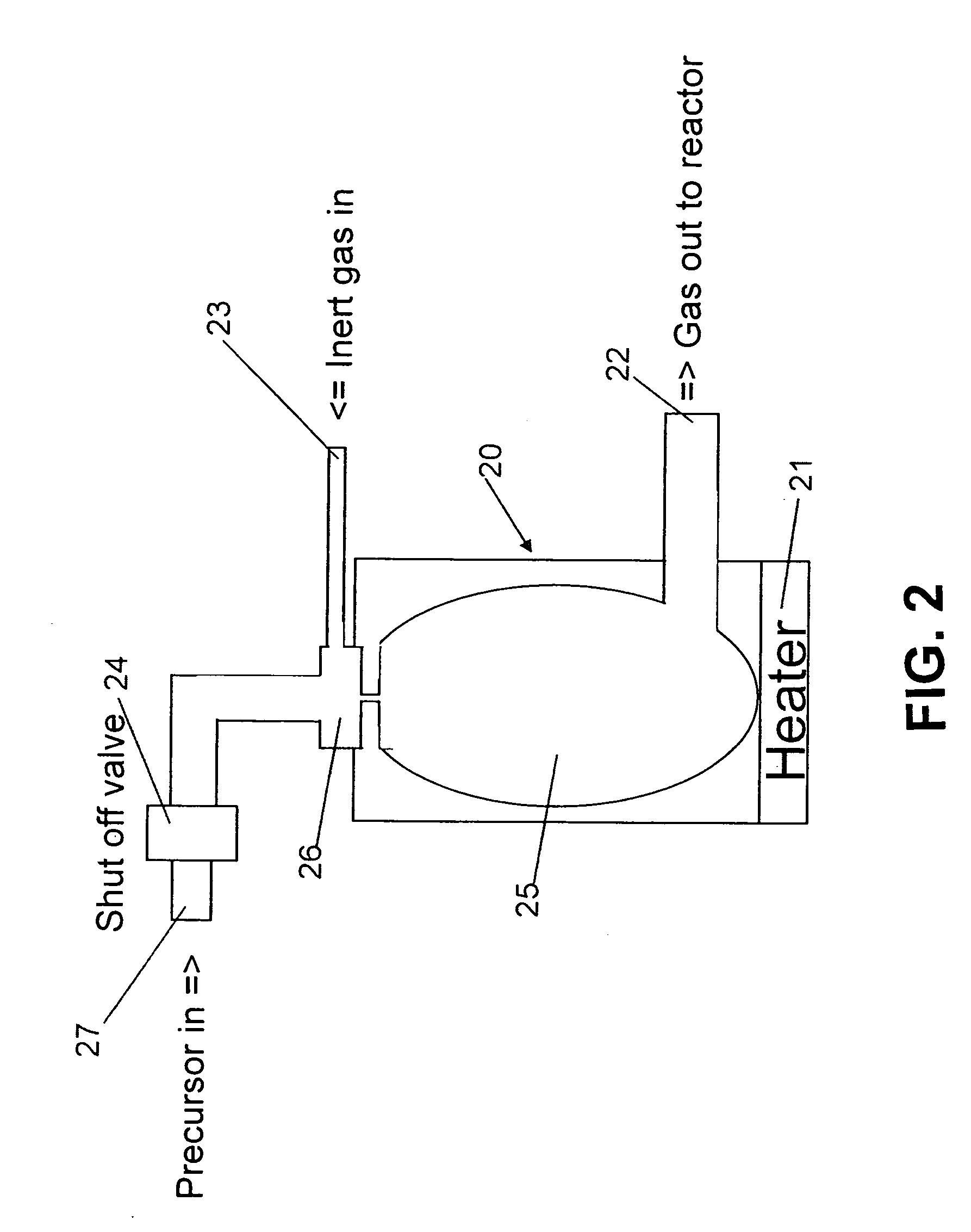Method of forming a carbon polymer film using plasma CVD
a carbon polymer and plasma cvd technology, applied in the direction of liquid surface applicators, instruments, coatings, etc., can solve the problem of difficult formation of thin films on substrates, and achieve the effect of excellent characteristics and high functionality
- Summary
- Abstract
- Description
- Claims
- Application Information
AI Technical Summary
Benefits of technology
Problems solved by technology
Method used
Image
Examples
example 1
Process Conditions in this Example and Film Formation Results are Shown as Follows
[0097] Gap between shower plate and susceptor: 12 mm
[0098] Process Conditions:
[0099] TMB (1,3,5-trimethyl-benzene, C6H5(CH3)3): 70 sccm
[0100] He supplied to vaporizer: 50 sccm
[0101] Process gas He supplied to reactor: 50 sccm
[0102] Ar: 50 sccm
[0103] RF Power 27 MHz: 1400 W
[0104] Pressure: 270 Pa
[0105] Film formation time: 70 sec
[0106] Film Formation Results:
[0107] Thickness: 200 nm
[0108] RI(n): 1.67
[0109] RI(k): 0.02 @633 nm
[0110] Modulus: 7 GPa
[0111] Hardness: 0.7 GPa
[0112] (Controllability of Thin Film Formation)
[0113] Additionally, FIG. 3 shows relation of film formation time and a thickness of a film formed obtained under the same conditions as the above. A film thickness is proportional to the film formation time; it was confirmed that thin films having a thickness from approximately 30 nm to approximately 400 nm were formed with satisfactory controllability. Additionally, RI, mod...
example 2
Process Conditions in this Example and Film Formation Results are Shown as Follows
[0114] Gap between shower plate and susceptor: 12 mm
[0115] Process Conditions:
[0116] TMB: 70 sccm
[0117] He supplied to vaporizer: 50 sccm
[0118] Process gas He supplied to reactor: 50 sccm
[0119] Ar: 50 sccm
[0120] RF Power 27 MHz: 1400 W
[0121] Pressure: 270 Pa
[0122] Film formation time: 18 sec
[0123] Film Formation Results:
[0124] Thickness: 50 nm
[0125] RI(n): 1.67
[0126] RI(k): 0.02 @633 nm
[0127] Modulus: 7 GPa
[0128] Hardness: 0.7 GPa
example 3
Process Conditions in this Example and Film Formation Results are Shown as Follows
[0129] Gap between shower plate and susceptor: 24 mm
[0130] Process Conditions:
[0131] TMB: 280 sccm
[0132] He supplied to vaporizer: 50 sccm
[0133] Process gas He supplied to reactor: 50 sccm
[0134] Ar: 50 sccm
[0135] RF Power 27 MHz: 1400 W
[0136] Pressure: 270 Pa
[0137] Film formation time: 430 sec
[0138] Film Formation Results:
[0139] Thickness: 245 nm
[0140] RI(n): 1.82
[0141] RI(k): 0.015 @633 nm
[0142] Modulus: 5.6 GPa
[0143] Hardness: 0.4 GPa
PUM
 Login to View More
Login to View More Abstract
Description
Claims
Application Information
 Login to View More
Login to View More - R&D
- Intellectual Property
- Life Sciences
- Materials
- Tech Scout
- Unparalleled Data Quality
- Higher Quality Content
- 60% Fewer Hallucinations
Browse by: Latest US Patents, China's latest patents, Technical Efficacy Thesaurus, Application Domain, Technology Topic, Popular Technical Reports.
© 2025 PatSnap. All rights reserved.Legal|Privacy policy|Modern Slavery Act Transparency Statement|Sitemap|About US| Contact US: help@patsnap.com



